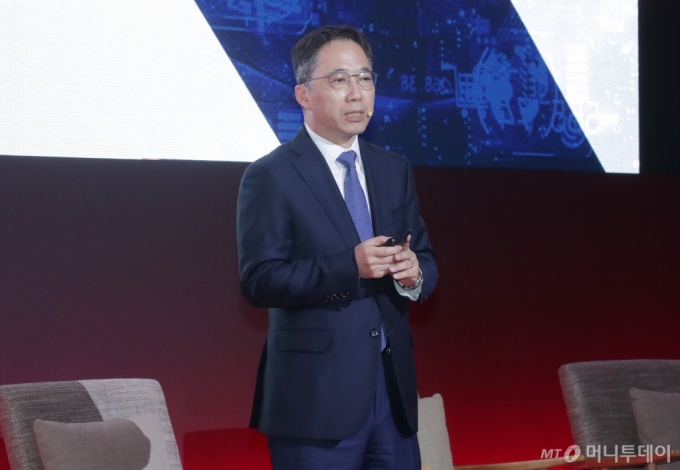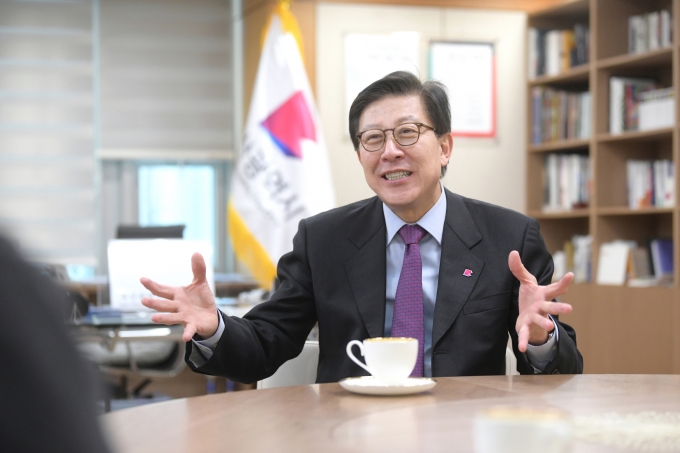미국의 경제 전문 통신서비스인 블룸버그는 22일(현지시간) 경제 칼럼니스트 윌리엄 페섹의 '한국 주식을 파는 것은 실수'라는 제목의 기고문을 실었다.
위리엄 페섹은 블룸버그 칼럼니스트로 한국과 중국, 일본을 비롯한 아시아 경제에 강하다. 다음은 기고문 요약과 영어원문이다.
"성급히 한국 주식을 팔면 그건 실수하는 것이다."
한국 종합주가지수 코스피는 올들어 7.8% 올랐다. 미국 다우지수는 8.5%, 일본 니케이 225 평균지수는 9.4% 하락했다.
왜 투자자들은 한국 주식에 불리시(bullish)한가.
첫째, 한국 경제는 올해 5% 성장한다. 이는 미국, 일본, 유럽보다 훨씬 높은 것이다. 하지만 이보다는 한국 경제가 최근 2년간의 정체에서 벗어나 종전의 활력을 되찾으려 하고 있다는 점이 더 큰 요인으로 작용하고 있다.
한국 경제 부활의 징후는 실제 곳곳에서 발견할 수 있다. 3월중 소비자들의 가계 형편은 최근 2년이래 가장 낙관적인 것으로 조사됐다.
경기회복은 보다 강력한 경제개혁을 가능케 해주고 있고 이를 통해 국민 삶의 질은 제고될 것이며 이는 결국 투자자들에게 매력 포인트가 될 것이다. 삼성전자같은 건실한 기업들, 역시 투자자들을 유인하고 있다.
현재 심각한 국면을 맞고 있는 한국 증시가 이 앞으로 전진할 수 있다는 확신을 시장에 심어주기 위해서는 4가지 요인을 해결해야 한다.
첫째, GDP 주술에서 벗어나야 한다. 높은 GDP증가율이 투자자들의 관심을 끄는 것은 사실이다. 그러나 한국 경제는 빠른 성장보다 좋은 성장을 필요로 하는 단계에 와있다.
부자에서 빈자까지 한국민 삶의 질이 개선되고 있음을 주목해야 한다.
둘째, 시장 정서가 극단적 낙관론에서 극단적 비관론으로 시계 추처럼 왔다갔다하는 '진동추 경제학'이 개선돼야 한다. 수출의존도를 낮추는 게 한 방법이 될 수 있다. 노동시장의 현대화도 필요하다.
세째, 여성노동력을 활용해야 하고 다음으로 한국의 미래는 과거와는 사뭇 다르다는 것을 받아들여야 한다. 은행들의 대차대조표는 건전하고 외환보유고는 2000억달러 이상이고 정부부채는 GDP의 30% 이하다.
한국의 미래는 아이디어와 혁신에 관한 것이다. 제조품과 공장이 아니며 과거의 중상주의적 방식은 이제 설 자리가 없어졌다. 한국경제는 일자리 보호보다 일자리 창출을 더 필요로 하고 있다.
이는 새로운 지식기반 경제를 요구하고 있다. 중일간 긴장이 고조되고 있는 요즘, 중국의 붐을 어떻게 활용하고 일본과는 어떻게 우호적 관계를 지속하는냐도 숙제다.
한국의 경제 지도력은 종종 한국의 강력한 잠재력과 강고한 에너지와 부합하지 못한다. 한국은 지금 전세계에 성급히 '셀 코리아' 하지말 것을 상기시켜줄 좋은 기회를 맞고 있다.
이 기회를 활용하지 못하면 한국 주식에 승부를 건 투자자들은 행복하지 못하게 될 것이다.
It's a Mistake to Sell South Korea Short: William Pesek Jr.
April 22 (Bloomberg) -- A funny thing is happening in South Korea: Investors seem to be rediscovering the place.
The Kospi index is up 7.8 percent this year. That compares with an 8.5 percent drop in the Dow Jones Industrial Average and a 9.4 percent decline in Nikkei 225 Stock Average stocks.
Why might some investors be turning bullish on Korea?
The possibility of 5 percent growth this year, for one thing. That seems paltry by Korean standards, yet it's a rate of which the U.S., Europe and Japan can only dream. It could provide a boost to corporate earnings amid slowing growth elsewhere, competition from China and rising energy costs.
Yet the bigger reason may be a calculated risk that after two years of backsliding, Korea is ready to reclaim its title as one of Asia's most vibrant economies.
There's reason to believe that is indeed occurring. Surveys show consumers in March were optimistic about their finances for the first time in 2 years. Even more important, though, this year's recovery provides a rare window of opportunity to push through reforms that could raise living standards and attract investors in the long run.
It's an opening for the government to see to it that households work their way out of debt taken on since the 1997- 1998 Asian crisis. It's a chance to make sure more Koreans at the bottom end of the economy benefit from today's growth.
Solid Companies
It could remind markets there are solid Korean companies in which to invest. Samsung Electronics Co. may get most of the headlines, but it's one of many interesting stocks on offer. It's an occasion to demonstrate that the influence of the family owned conglomerates that once towered over this economy is being reduced.
Will the government use this window of opportunity? After all, there are myriad examples of Korea pledging to stabilize the economy without succeeding, leaving many investors skeptical. Here are four things Korea could do to convince markets it's serious this time about moving forward.
One, avoid Asia's ``GDP fetish.'' From Korea to Indonesia and from the Philippines to India, there's a tendency to mask challenges with headline gross domestic product rates -- preferably very fast ones. They are a form of advertising as well as a diversion. Rapid GDP gets investors' attention and helps governments paper over economic cracks.
`Pendulum Economics'
Like Japan and China, Korea tends to trumpet high growth figures as a sign they are succeeding. Yet this economy doesn't need faster growth, but better growth. A better gauge is the way in which the lives of people from the richest to the poorest are improved. Only when Korea's wealth gap narrows markedly can policy makers pat themselves on the back.
Two, move beyond ``pendulum economics,'' or the tendency of investor sentiment toward Korea to swing wildly from extreme optimism to extreme pessimism.
One way is to make the economy less reliant on exports. Helping households and small-and-medium-size enterprises reduce debt so they can be more productive in the economy would help. So would modernizing labor markets, which tend to offer workers so much job security that companies are reluctant to invest in the future or take risks.
Three, empower women in the workplace. In a recent MasterCard International survey on the socioeconomic level of women relative to men in 13 Asia-Pacific nations, Korea came in last.
The Future
The more a country uses its female workforce, the more vibrant it tends to be. Korea is only tapping half of its labor pool, lowering the quality of job applicants and restraining the economy's potential growth rate. Underutilizing women compounds one of Korea's long-term challenges: a declining birthrate.
Since there isn't a big enough infrastructure for women who want to work and raise children, motherhood can often be a career- ending prospect. Until real equality is established, Korea's birthrate may not increase, leaving Seoul with fewer skilled workers in the long run.
Four, accept that Korea's future will be very different from the past. The underlying economy is a far cry from the late 1990s. Bank balance sheets are healthier, currency reserves are above $200 billion and government debt is just 30 percent of GDP.
Yet Korea is having trouble scrapping the developing-nation mentality of managing the currency's value. Korea's future is about ideas and innovation, not products or factories, and the mercantilist ways of the past have no place in it.
Taking Action
This economy needs to be more about job creation than job protection. That means brainstorming on new knowledge-based industries. It means figuring out how to benefit from China's boom and get along with Japan -- and vice versa -- at a time of rising tensions. It also means parking less money that could be used here to support entrepreneurship in U.S. Treasuries.
It's frustrating, though, that forward-looking economic leadership often doesn't match Korea's vast potential and ground- up energy. And the trouble with windows of opportunity is they don't come along often and tend to stay open for only a short time.
Korea now has a great opportunity to remind the world not to sell its economy short. If it doesn't seize it, investors betting on Korean stocks may not be a happy bunch.
- VIEW 9,032
- 2005.04.23 14:23
|
<저작권자 © ‘돈이 보이는 리얼타임 뉴스’ 머니투데이, 무단전재 및 재배포 금지>
|









































































![[단독]어도어 경영진, 글로벌 국부펀드에 매각 검토...애널 실명도 등장](https://thumb.mt.co.kr/11/2024/04/2024042308451477838_1.jpg/dims/resize/100x/optimize/)

















![학교 운동장에 56m '초대형 김구' 그림, 그린 이유가…[인류애 충전소]](https://thumb.mt.co.kr/10/2024/04/2024042211365743544_1.jpg/dims/resize/100x/optimize)








!["학생 10명 거품 물고 쓰러져"…비극으로 끝난 '우정 여행'[뉴스속오늘]](https://thumb.mt.co.kr/10/2023/12/2023121717255330052_1.jpg/dims/resize/100x/optimize)












![지코·제니, 차트 휩쓸고 뉴진스 온다..하이브·민희진 갈등 영향 無[★FOCUS]](https://menu.mt.co.kr/upload/main/2024/2024042623441495331838_mainTop.jpg)






![미국 대선, 6개주만 보면 답 나온다 [PADO 편집장의 '미국 대 미국']](https://i4.ytimg.com/vi/7kc1ddGnWtE/hqdefault.jpg)


















